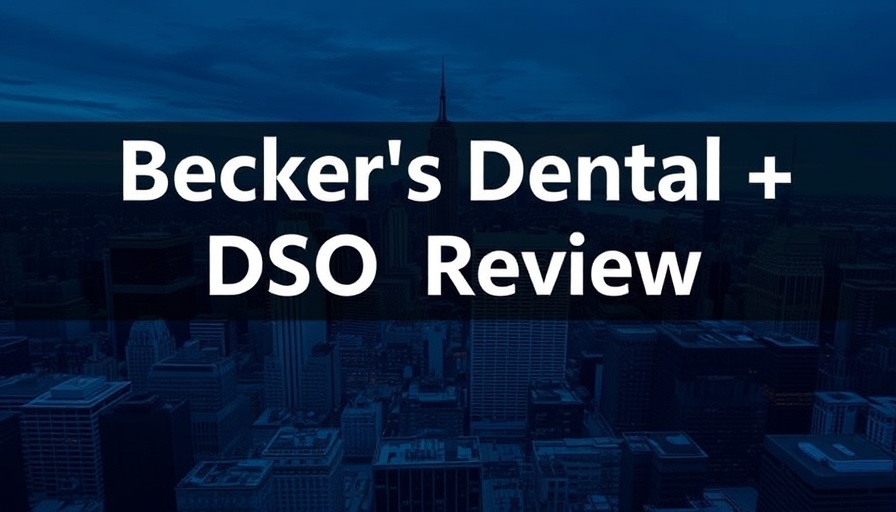
Damage and Recovery: The Current State of Eden Dental
A recent fire incident at Eden Dental in Roseburg, Oregon, has left the local dental community in distress. The fire, deemed accidental and caused by electrical issues, was extinguished quickly, sparing the surrounding property from further damage. While no one was in the building at the time, the dental practice sustained significant smoke, water, and structural damage. This incident raises vital questions about safety protocols and the resilience of dental practices amidst unforeseen challenges.
Historical Context: Rising Concerns of Electrical Safety in Healthcare
Electrical fires are becoming an increasing concern in healthcare settings, where high-tech equipment is prevalent. An analysis of the National Fire Protection Association (NFPA) data shows that over 70% of fires in healthcare facilities are caused by electrical malfunctions. The Eden Dental incident reflects a broader trend that dentists and other healthcare professionals must consider: the necessity of rigorous electrical safety measures to protect not just property but also the lives and well-being of staff and patients.
The Value of Community Trust for Practices Facing Difficulties
For Dr. Emily Johnson, a suburban dentist, the fallout from a fire like the one at Eden Dental emphasizes the importance of maintaining community trust. As a solo practitioner engaged with her local community, fostering these relationships can be challenging, especially after an unexpected crisis. Patients want reassurance that their healthcare providers are safe and reliable. Rebuilding trust requires transparent communication, effective crisis response strategies, and community engagement efforts that resonate with patients on an emotional level.
Future Insights: Redefining Safety Protocols in Dental Practices
As the industry grapples with incidents like the one at Eden Dental, there's an urgent push for rethinking operational protocols. Dental practices may need to invest in preventive measures, like regular electrical safety audits or upgraded electrical systems, which could incur initial costs but ultimately save money and protect staff and patients. There is growing advocacy for integrating technology to monitor electrical systems proactively, reducing the chances of electrical failures that can lead to dangerous fires.
Counterarguments: The Financial Implications of Safety Investments
While investing in safety improvements is essential, some practitioners argue against immediate financial outlays, criticizing the impact on cash flow—especially for solo or small practices. However, the cost of recovering from a fire or other disaster outweighs the potential savings from cutting corners on safety. A strategic approach involving phased investments in safety upgrades may strike a balance between immediate financial concerns and long-term sustainability.
Statistics: Understanding the Fire Risks in Dental Practices
Data from the NFPA indicates that healthcare facilities experience over 8,000 fires annually, resulting in substantial financial losses and risks to patient safety. According to dentists surveyed, many believe they are ill-prepared for such emergencies. This discrepancy highlights a critical gap in preparedness and emphasizes the need for comprehensive fire safety training within the dental community.
Emotional Resilience Following Crisis
After a traumatic event, practitioners and their staff often experience emotional turmoil. The psychological effects of fires can linger, influencing team morale and overall productivity. It is essential for practice owners like Dr. Johnson to prioritize mental health resources during the recovery phase, fostering open dialogues about stress and anxiety, ultimately leading to a more supportive workplace.
Conclusion: Building a Culture of Safety and Trust
The fire incident at Eden Dental serves as a crucial wake-up call for the dental community. By investing in electrical safety protocols, maintaining open communication with patients, and fostering a nurturing environment for staff, practices can navigate challenges while building trust and ensuring sustained growth. Dental practitioners must not only ensure the safety of their physical operations but also consider the emotional well-being of their teams and patients.
As a member of the dental community, consider adopting these strategies into your practice. Let's foster a culture of safety and trust!
 Add Row
Add Row  Add
Add 




Write A Comment